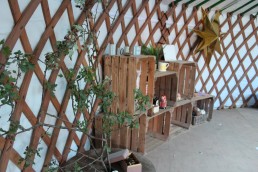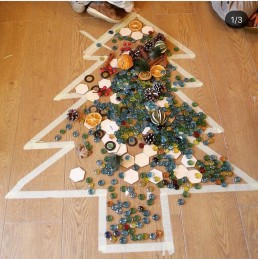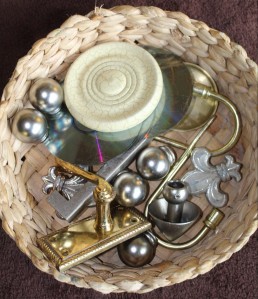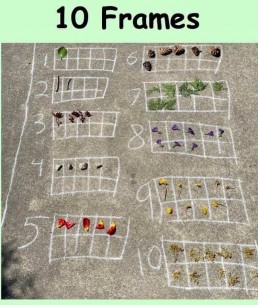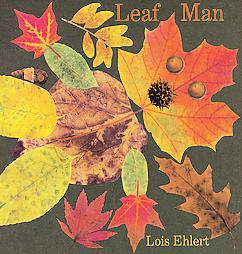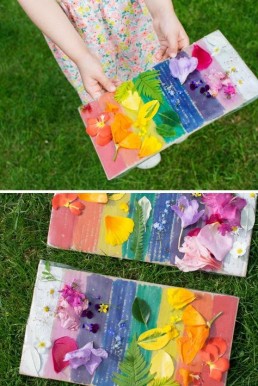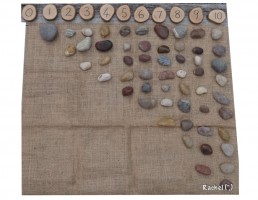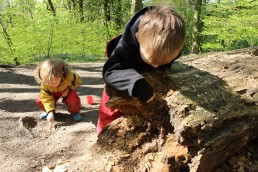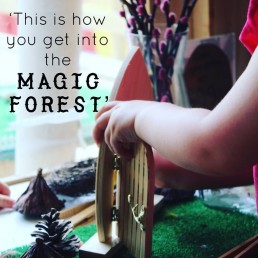Pre-School at Horsforth
Happy New Year to everyone, it sure has been an eventful start to the year as we continue to tackle a pandemic with 3 inches of snow thrown in to test us. But hope and positivity prevails, and we really valued your responses to our previous blog on the little steps we can all take to create a more sustainable year.
We thought we would start the year of blogs by taking a look at our Pre-School Settings across Horsforth and Adel. Currently our Pre-School bubble at Horsforth has closed, so for those affected we are posting daily activities and zooms for the children, you can find all the information you need on Tapestry.
We start by looking back at 2018- the time we implemented the Reggio Approach into our classrooms, changed our name from Dolphins to Inspirations, and rebuilt our entire Pre-School area. This change meant moving the Toddler Room into the old Pre-School room, opening up a second Baby Room, and building a Yurt, Outdoor Class Room and Art Studio on the patch of un-used grass land behind our nursery.
Our Yurt



Flattening the land for our Mongolian Yurt was quite the task, over the spring months of 2018 the changes were finalised and after calling in help from some of our parents, together with Colin the Yurt was erected in just a couple of days. The Yurt is a unique space and feature at Inspirations that provides just one of many learning areas for our Pre-School children. It is a cosy space to warm up in adverse weather and to eat their meals during winter. The yurt is filled with literacy areas, maths areas, open ended resources and books for reading and researching. See more about our Yurt here- http://simonr30.sg-host.com/our-yurt/
Outdoor Classroom



Our children are predominantly outdoor learners, and our outdoor classroom is a constantly changing space that matches the children's interests and mirrors seasonal changes. Adapting our classroom to match their interests invites our curious young minds to explore and discover, and is the perfect space for them to unleash their creativity.
No Fear of Failure
Throughout our Pre-School areas room Reggio Emilia is of course the guiding principle, and our spaces reflect that. Our Project based approach provides the backbone of their learning, so it is important that our environment and educators support their creative thought process without any fear of failure.
Exciting News
 This January are excited to announce a brand new Room Leader for our Pre-School room. Jennie is an experienced Reggio inspired Early Years Educator who over the course of the last 15 years has worked in Dubai, Japan, Angola and Vietnam and has been to Reggio Emilia three times. We’re very excited that she has joined our team and brings her passion for our pedagogy and supporting children through child- led learning. Her email address is jennie@inspirationsnurseries.co.uk if you would like to get in touch.
This January are excited to announce a brand new Room Leader for our Pre-School room. Jennie is an experienced Reggio inspired Early Years Educator who over the course of the last 15 years has worked in Dubai, Japan, Angola and Vietnam and has been to Reggio Emilia three times. We’re very excited that she has joined our team and brings her passion for our pedagogy and supporting children through child- led learning. Her email address is jennie@inspirationsnurseries.co.uk if you would like to get in touch.
If you’re interested in your child joining our Pre-School over 3’s room please take a look at our website and get in touch with Kayleigh@inspirationsnurseries.co.uk.
 In next weeks blog we will be taking a look at our Pre-School setting over at Adel. In the mean time stay safe in the snow and please do send in any photos you have out exploring the weather. We will select some highlights to share on our social media this weekend.
In next weeks blog we will be taking a look at our Pre-School setting over at Adel. In the mean time stay safe in the snow and please do send in any photos you have out exploring the weather. We will select some highlights to share on our social media this weekend.
"We value space to create a handsome environment and its potential to inspire social, affective and cognitive learning. The space is an aquarium that mirrors the ideas and values of the people who live in it" -Loris Malaguzzi
- Nathalie
Taking Care of the Little Things
The year is coming to an end, and this December has been a time to reflect on many things, including our sustainability as a nursery. There are many things we do at Inspirations to be as sustainable possible, not only to save our planet from harm but also because it is essential for human well-being.
With 1 in 6 of the world's species facing extinction, a growing pollution problem, and a pandemic jeopardising the health of loved ones we are reminded how important it is to teach our younger members of society how to help us take care of our planet.
Taking care of the little things helps the big things fall into place.
Children often mirror behaviour of their adults or carers, so what do we do at our nursery to help save the planet?
- Recycling- We have a recycling bin in all of our rooms and staff room, and in the older rooms we teach the children which bins they can put their rubbish in. Helping them get into the habit of considering which bin things should go into will stay with them in the future.
- Use less paper- This is a tricky one at nursery as we would never want to limit a child's creativity. Recently we acquired paper from a local company that was scrap and headed for the bin. We also use white boards, blackboards, chalks, digital drawings, and transient art using loose parts. All of these help to reduce the amount of paper waste.
- Outdoor learning- Our pre-school setting is primarily outdoor, with outdoor play being a huge part of the younger age groups also. "Playing in natural spaces supports a child's sense of self, allowing children to recognise their independence alongside an interdependence and connectedness with their ecological worlds.''
- Reduce and Reuse- We said goodbye to plastic toys a few years ago, and swapped these for more natural ambiguous resources. We repurpose old cable reels throughout, and will always aim to acquire our resources second hand or from SCRAP.
Read more about where we shop- http://simonr30.sg-host.com/news-and-blog/loose-parts-in-the-community/



- Wormery Composting- The children in pre-school take great pleasure in putting their wasted fruit and veg into our wormery. About a third of household waste is organic, so by recycling this as compost we are reducing the amount of waste sent to landfill.
- Water Play- We teach our children that water is a precious resource and that it should be used wisely and reused where possible. To support this we discourage water play from the sinks and taps and instead use purpose build water basins for them to explore water in, and use this to water the garden after use.
- Growing Fruit and Veg- We grow fruit and veg from potatoes to strawberries, our children can learn the pleasure and reward from growing their own food at nursery.
- Care for living things- From bee hotels to worm houses, from night-cams capturing local wild life to having our own nursery dog, it is instilled in our children from a young age to treat all of our insects and wild life and with love, care and respect.



Striving to Improve
There's still so much more we want to do at Inspirations to be sustainable and are constantly growing and developing. We are currently in the process of building a nature reserve with a pond behind our yurt- updates to follow.
Please share with us how you at a home or in a nursery setting help to create a a more sustainable environment, maybe you can inspire us here at Inspirations. This Christmas why not consider second hand books or toys or gifting experiences rather than material possessions.
That's a wrap
As we wrap up our blogs for 2020; the year we will always remember, let's make sure we wrap only with paper that can be recycled with brown paper tape, and remember that taking care of our environment will help us build a brighter 2021 for ourselves and our little ones.
-Nathalie
Loose Parts
Why do we use loose parts?
Loose parts are a significant segment of our ethos at Inspirations Nurseries. Before moving away from conventional toys, we did a lot of research into the benefits of using loose parts. Several education pedagogies use loose parts. Reggio Emilia and loose parts complement each other well; we use both at Inspirations. Both philosophies support open ended play using natural resources, imagination, and creativity. When children are given opportunities to engage in free play with little adult direction, they are able to explore freely with creativity and expression, because there are no limitations or expectations.

What are Loose Parts?
Loose parts are open ended materials that can be moved around, designed, and redesigned. They create opportunities to use our imaginations and discover new ideas. Conventional toys are fixed for the one purpose they were made for, whereas loose parts are open ended and can be used for a variety of things. A plastic car can only be a car. A stick could be a magic wand or a person or you could use a number of them to make a house… the possibilities are endless. Ask any parent how long their children will play with the cardboard box a toy comes in on their birthdays. Loose parts can be found anywhere. How many of us remember going to the beach and collecting shells and stones and making patterns with them? You can find loose parts in the house, in the garden or on a walk. Loose parts include both manufactured and natural resources. These can include stones, pinecones, rings, balls, blocks, boxes, leaves and even nuts and bolts.


Endless Possibilities
For outdoor play, we provide a variety of large loose parts such as tyres of different sizes, milk crates, planks of wood, cable reels etc. In our baby rooms, we use a variety of loose parts to support schemas; we use things like curtain rings to hang on mug trees, balls to post through holes, tyres to encourage rolling. Toddlers can then use slightly smaller loose parts such as pebbles to create patterns and smaller wood slices for counting. Preschool are able to use more intricate loose parts such as beads, small tiles and items they find on forest school.
The founder of the Reggio Emilia Philosophy said...
“Children need the freedom to appreciate the infinite resources of their hands, their eyes and their ears, the resources of forms, materials, sounds and colours”.
-Kayleigh
See loose parts in action in our Pre-School room here- https://youtu.be/Nngfh6Uj-yw
All photos from Inspirations Nursery
Number Frames
Resources – chalk, spring finds, or alternatively pens and paper
Implementation
Draw 10 grids of 10 boxes and number them 1 to 10. Add the amount of items to match the corresponding numbers into the boxes.
If your child is working on numbers to 5 just draw 5 boxes, similarly if your child is working beyond 10 add more larger boxes.
Intent- Learning Goals
Maths – Numbers
30-50 months
- Uses some number names and number language spontaneously.
- Uses some number names accurately in play.
- Recites numbers in order to 10.
- Knows that numbers identify how many objects are in a set.
- Beginning to represent numbers using fingers, marks on paper or pictures.
- Sometimes matches numeral and quantity correctly.
- Shows curiosity about numbers by offering comments or asking questions.
- Shows an interest in number problems.
- Shows an interest in numerals in the environment.
- Shows an interest in representing numbers.
40-60 months
- Recognise some numerals of personal significance.
- Recognises numerals 1 to 5+
- Counts up to three or four objects by saying one number name for each item.
- Counts actions or objects which cannot be moved.
- Counts objects to 10 and beginning to count beyond 10.
- Counts out up to six objects from a larger group.
- Selects the correct numeral to represent 1 to 5, then 1 to 10 objects.
- Counts an irregular arrangement of up to ten objects.
- Estimates how many objects they can see and checks by counting them.
- Uses the language of ‘more’ and ‘fewer’ to compare two sets of objects.
- Says the number that is one more than a given number.
- Records, using marks that they can interpret and explain.
- Begins to identify own mathematical problems based on own interests and fascinations.
Make your own Leaf Man
Resources: Leaves, paper, glue,
Implementation
Lots of children have been sharing their leaf play and discoveries with us. We hope you enjoyed our Leaf Man story read by Nicola, you can find it here-
https://www.youtube.com/watch?v=NLEMeqLITwo&t=20s
Go for a walk and look for Autumn leaves and have a go at making your own Leaf Man, don't forget to ask your children some questions along the way. Below we have listen the criteria of learning development this activity meets.
- What does Leaf Man look like?
- Who will you make?
- What will you need?
- What could you use to make their face?
Intent – Learning Goals
Moving and Handling
22-36 months
- Shows control in holding and using jugs to pour, hammers, books and mark-making tools.
- Beginning to use three fingers
30-50 months
- Uses one-handed tools and equipment
40-60 months
- Uses simple tools to effect changes to materials.
- Handles tools, objects, construction and malleable materials safely and with increasing control.
Literacy
22-36 months
- Has some favourite stories, rhymes, songs, poems or jingles
30-50 months
- Describes main story settings, events and principal characters.
- Shows interest in illustrations and print in books and print in the environment.
40-60 months
- Uses vocabulary and forms of speech that are increasingly influenced by their experiences of books.
- Enjoys an increasing range of books.
Being Imaginative
22-36 months
- Beginning to use representation to communicate, e.g. drawing a line and saying ‘That’s me.’
30-50 months
- Captures experiences and responses with a range of media, such as music, dance and paint and other materials or words.
40-60 months
- Create simple representations of events, people and objects.
Exploring and using media and materials
30-50 months
- Joins construction pieces together to build and balance.
- Realises tools can be used for a purpose.
40-60 months
- Understands that different media can be combined to create new effects.
- Manipulates materials to achieve a planned effect.
- Constructs with a purpose in mind, using a variety of resources.
- Uses simple tools and techniques competently and appropriately.
- Selects appropriate resources and adapts work where necessary.
- Selects tools and techniques needed to shape, assemble and join materials they are using.
Spring Colour Hunt
Resources: Pens or paints, paper/card, glue and natural loose parts

Implementation
Paint some colours or a rainbow onto paper, see how many natural items you can find outdoors to match the colours, then stick them to the matching colour. There are some beautiful spring colours to find at the moment.
What colours do you have to use?
What colour would you like to have?
What colours could you mix to make this colour?
What colours did you find?
What colour items did you find the most of?
What else can you see in the environment that are these colours?
Intent – Learning Goals
Expressive Arts and Designs – Exploring and using media and materials
22-36 months
- Experiments with blocks, colours and marks.
30-50 months
- Explores colour and how colours can be changed
40-60
- Explores what happens when they mix colours
Understanding the World – The world
22-36 months
- Notices detailed features of objects in their environment.
30-50 months
- Comments and asks questions about aspects of their familiar
- world such as the place where they live or the natural world.
- Can talk about some of the things they have observed such as plants, animals, natural and found objects.
- Developing an understanding of growth, decay and changes over time.
40-60 months
- Looks closely at similarities, differences, patterns and change.
Leaf Weaving
Resources – sticks, leaves and string
Implementation
This activity needs a lot of focus, time and adult support when needed, but is a great activity to encourage concentration and fine motor control. It can be made simpler with less string to thread through.
Make a square with the sticks and string, then tie lengths of string across to weave the leaves through. There are lots of leaves around of varying colours to make colour patterns, what do you observe when you look through it at the sun?
Intent – Learning Goals
Characteristics of Effective Learning
Being involved and concentrating
- Maintaining focus on their activity for a period of time
- Showing high levels of energy, fascination
- Not easily distracted
- Paying attention to details
- Finding ways to solve problems
- Finding new ways to do things
Keeping on trying
- Persisting with activity when challenges occur
- Showing a belief that more effort or a different approach will pay off
- Bouncing back after difficulties
Enjoying achieving what they set out to do
- Showing satisfaction in meeting their own goals
- Being proud of how they accomplished something – not just the end result
- Enjoying meeting challenges for their own sake rather than external rewards or praise
Making links
- Making links and noticing patterns in their experience
- Making predictions
- Testing their ideas
- Developing ideas of grouping, sequences, cause and effect
Choosing ways to do things
- Planning, making decisions about how to approach a task, solve a problem and reach a goal
- Checking how well their activities are going
- Changing strategy as needed
- Reviewing how well the approach worked
Finding out and exploring
- Showing curiosity about objects, events and people
- Using senses to explore the world around them
- Showing particular interests
Being willing to ‘have a go’
- Seeking challenge
- Showing a ‘can do’ attitude
- Taking a risk, engaging in new experiences, and learning by trial and error
Matching Quantity to Numerals
Resources: Stones, pens, numbers
Collect up all those stones you find on your walks and match them to the numbers. You can write the numbers on a piece of paper or use any numbers you have. As an extension you could continue to 20.


Intent- Learning Goals
Maths - Numbers
30-50 months
Recites numbers in order to 10.
- Knows that numbers identify how many objects are in a set.
- Beginning to represent numbers using fingers, marks on paper
or pictures.
- Sometimes matches numeral and quantity correctly.
- Shows an interest in number problems.
- Shows an interest in representing numbers.
40-60
- Recognise some numerals of personal significance.
- Recognises numerals 1 to 5+
- Counts up to three or four objects by saying one number name for each item.
- Counts objects to 10, and beginning to count beyond 10.
- Counts out up to six objects from a larger group
Impact
How did this activity go? Please use this space to record any findings, adaptions, reflections and quotes from your children. We would love you to email them back to us or share them on Tapestry, Instagram or Facebook.
The Five Big Questions - Part One
After recently announcing her 5 big questions survey, Inspirations has decided to take a closer look at what exactly the Duchess of Cambridge is interested in finding out. Starting with question one:
WHAT DO YOU BELIEVE IS MOST IMPORTANT FOR CHILDREN GROWING UP IN THE UK TODAY TO LIVE A HAPPY ADULT LIFE?
We are offered the four options below and asked to put into priority order.
- Good physical and mental health
- Good friendships and relationships
- Access to opportunities
- Access to a good education
I found it tricky to prioritise these categories, as here at Inspirations we view each point as being an equally important factor in raising a healthy happy child. Much thought has gone into how Inspirations operates in order to successfully cover these four areas.
Physical and Mental Health
 Our outdoor learning environment and forest school ethos naturally promotes good physical and mental health. Children with spaces for running around and climbing trees naturally develop muscle strength, aerobic fitness, and better coordination. A Scottish study found activity levels were 2.2 times higher in a typical Forest School day than during a school day that included PE lessons. Not to mention that as parents we love our children to get plenty of healthy fresh air which our location offers in abundance, set a fair way from any roads and surrounded by country fields and a section of the wooded Leeds Way.
Our outdoor learning environment and forest school ethos naturally promotes good physical and mental health. Children with spaces for running around and climbing trees naturally develop muscle strength, aerobic fitness, and better coordination. A Scottish study found activity levels were 2.2 times higher in a typical Forest School day than during a school day that included PE lessons. Not to mention that as parents we love our children to get plenty of healthy fresh air which our location offers in abundance, set a fair way from any roads and surrounded by country fields and a section of the wooded Leeds Way.
Friendships and Relationships

Playing alongside our children every day are of course their friends. Friendships in the early years are so important to our developing children, they help them build self-confidence, develop their social and emotional skills and their understanding of the world around them. Sometimes of course, children struggle to mediate their emotions and play can quickly turn to squabbling and tears. It is then that our expert educators’ step in and support our children in understanding their emotions and help support them to make the right choices.
Access to Opportunities

Its safe to say that Inspirations children have an abundance of opportunities on offer! Daily forest school sessions, an art studio compete with art teacher, an array of fabulous loose parts and open-ended resources and the freedom to choose where and what they do with their day!
A Good Education
At Inspirations we pride ourselves on getting our children ‘school ready’. With our experienced educators we spend much of our time planning for your child’s education and learning journey. We observe their interests and extend on that incorporating numeracy, literacy, science and anything else we can cram in for their eager sponge like brains! Throughout their time with us we will track their development and ensure they are on track for the best possible start on their journey to being happy adults.
If you decide to take the survey which would you prioritise as being your number one important factor for developing into a happy adult?
Next week look out for my blog on question two, who is primarily responsible for a child’s health and happiness?
-Nicola
Ambiguous Resources
Here’s a wonderful example of how ambiguous resources can capture imagination, this week I left a small wooden door on a grass table to see what the pre-schoolers would make of it. Every group that came into the art studio used it in a different way; the first group passing pine cones through it to each other, the second group hiding behind it, knocking and opening it to reveal their faces before hysterical bursts of laughter, and others simply playing with the lock figuring out how it worked.
Some thought it was the best thing ever, others ignored it.
One little girl spent a long time playing with the door and when I asked her what it was, she whispered to me...
’This is how you get into the magic forest!’
Every child really is completely unique.



